Popularising Juliusz Slowacki's Travel to Greece in the Context of Romantic Philhellenism
Opublikowany przez mil.chilinska@gmail.com
20 października 2022
Author: dr Milena Chilińska
Lecture delivered by dr Milena Chilińska (Faculty of „Artes Liberales”, University of Warsaw) on 6 October at the Institute of Historical Research (National Hellenic Research Foundation) in Athens.
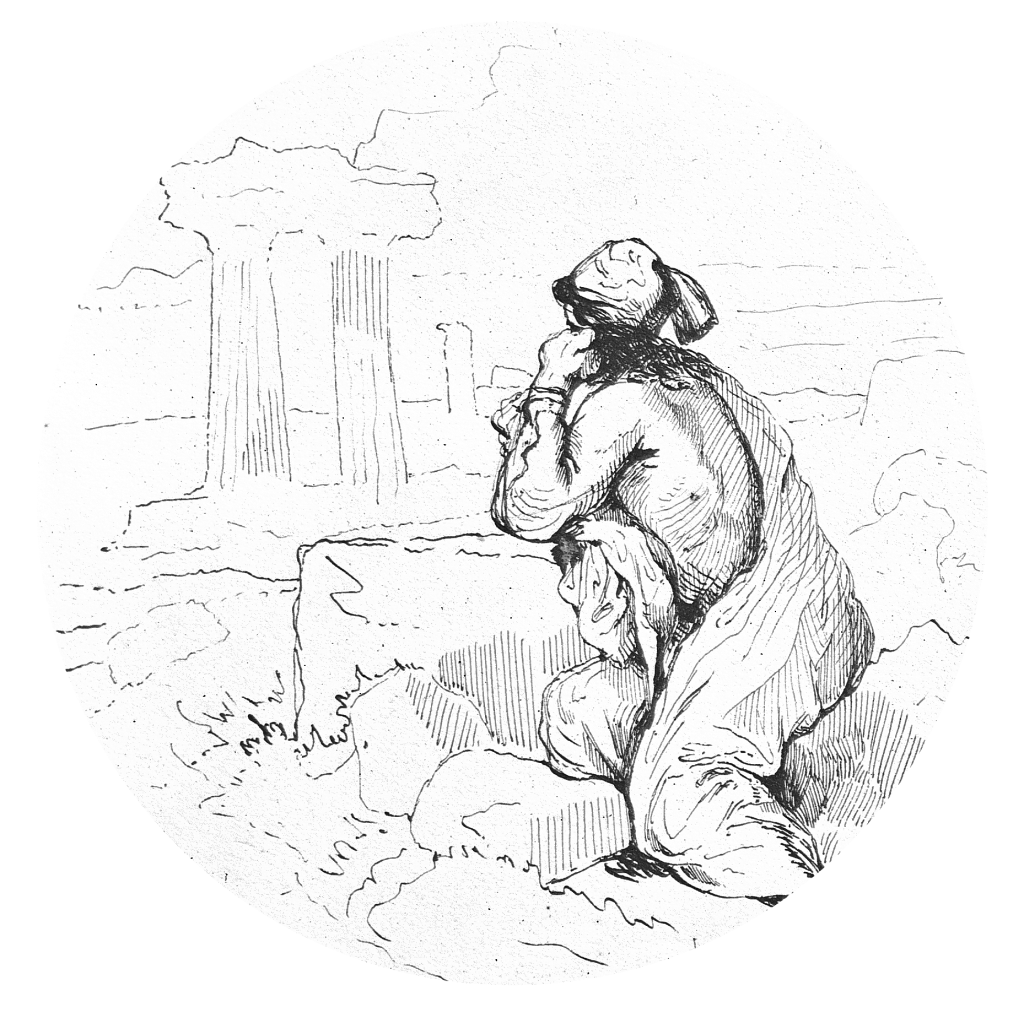
 he itinerary of Słowacki’s journey led him from Italy to Greece, and then on to Egypt, the Holy Land, and Lebanon. In August 1836, following the example of other Romantic poets (Byron, Chateaubriand, Lamartine), Słowacki set off from Otranto on his great journey to the East. He toured Greece, Egypt and the Holy Land, visited the Armenian monastery in Beit Khashbo, Mount Lebanon in March 1837, and arrived in Beirut in April. In May he returned from Tripoli to Italy, living in Florence until mid-December 1838. A direct account of his journey can be found in the posthumously published poem ‘Journey to the Holy Land from Naples’, mostly written in this notebook on the Greek island of Syros. Referring to the history of Italy and Greece, the poem contains thoughts on European culture and its foundations, and expresses the poet’s Philhellenic fascinations. It is rich in aesthetic tones and brilliantly expresses the creative attitude of the Romantic ironist.
he itinerary of Słowacki’s journey led him from Italy to Greece, and then on to Egypt, the Holy Land, and Lebanon. In August 1836, following the example of other Romantic poets (Byron, Chateaubriand, Lamartine), Słowacki set off from Otranto on his great journey to the East. He toured Greece, Egypt and the Holy Land, visited the Armenian monastery in Beit Khashbo, Mount Lebanon in March 1837, and arrived in Beirut in April. In May he returned from Tripoli to Italy, living in Florence until mid-December 1838. A direct account of his journey can be found in the posthumously published poem ‘Journey to the Holy Land from Naples’, mostly written in this notebook on the Greek island of Syros. Referring to the history of Italy and Greece, the poem contains thoughts on European culture and its foundations, and expresses the poet’s Philhellenic fascinations. It is rich in aesthetic tones and brilliantly expresses the creative attitude of the Romantic ironist.
Apart from the poem ‘Journey to the Holy Land from Naples’, the notebook contains poems at different stages of completion, drawings, watercolours, different kinds of notes, fragments of prose, plans for future works, remarks about material read and sites visited, as well as notes on expenses (e.g. the cost of renting a camel), and a dictionary of useful Arabic phrases. There are drawings of the Paleopolis in Corfu, the faces of Arabic women, the view from the monastery in Lebanon, the pyramids, and horses on the ships.
In 2020 the entire Eastern Diary was published for the first time. The notebook can be read as an interesting testimony of Romantic travel and the experience of Greece and the Middle East. We have attempted to collect the heterogeneous materials around a central theme: the experience of travel and the poet’s playing with Romantic travel writing. However, we also want to see this diary as a fragmentary and open work, as the journal of a Romantic artist travelling around sites that were considered central to European and Middle Eastern cultures, and experiencing a deep spiritual transformation.
Our project sought to investigate the document and use it in an interdisciplinary manner as a multiple source – in the areas of history of literature, history, text edition and textology, as well as biography. The finding of this manuscript has opened the potential for a new description of Słowacki’s journey to Greece and to the Middle East in political, artistic, existential, and moral contexts.
Popularising the Słowacki journey is one of our Team’s primary tasks. We have taken a number of activities to promote research into the poet’s notebook. One of our major initiatives is the website exploring issues and aspects of the journey. A number of lectures popularising the subject have been held across schools and cultural institutions.
I have been running the website for a couple of years now. Ewa Janion supported me in developing the concept, with repeated contributions from a graphic artists and a programmer. The website is under development as I feed it from time to time with materials related to Słowacki’s journey and news on popularising events.
This site has been developed in order to made the Słowacki work available to a possibly large group of readers and spectators. Hence, the pivotal function of the website as the space of exchange and contact and, in fact, a tool enabling such further work on the poet’s fascinating notebook and his voyage, as well as on his entire output.
Featured on the website is a facsimile of the notebook, its transcription and transliteration, plus a photo gallery linked to each single card. The gallery features present-day pictures of places and locations and portraits of persons described by Słowacki, illustrations of the consecutive editions of Journey to the Holy Land from Naples. Info is attached on the project and the notebook research Team as well as a blog on issues related to Słowacki’s works.
Let us take a look at Part IV of the poem, which deals with Greece. In the Gallery, you can find pictures enabling you to encounter nineteenth-century engravings or plates, and modern-day views of the places described by Słowacki.
Students (of any level) can contribute to the blog. A group of high-school students have proposed their interpretations of the poet’ s journey poems whereas I took care of the substance of their essays and the accompanying artwork. The poems included Pieśń na Nilu [A Song Upon the Nile] (Zofia Kłosińska, Magdalena Brzezińska) and an early work entitled Mnich [The Monk] (Magdalena Brzezińska). One of those students Magdalena Brzezińska was trained into the WordPress environment and helped complement the website content, converted the notebook cards and exported them to the admin panel. She pretty much enjoyed this challenging extracurricular activity.
The site’s content is also available in English – what you have to do is just click ‘EN’ in the top right corner, and there you are.
The site has links to the social media I run. The Facebook site is entitled ‘Juliusz Słowacki’; the one on Instagram, ‘Słowacki@eu’. I post contents related to the poet’s works, including my own photos of postcards, books, drawing by the poet and paintings inspired by his works. These channels reach audiences outside academic or scholarly circles. Moreover, I publish information on new blog posts and up-and-coming events.
My high-school students were invited to the official presentation of the site and the journal edition, and could take part in a discussion attended by academics.
A high-school and a college student Magdalena Brzezińska, Gabriela Niemczynowicz-Szkopek helped me compile an index for my book on the modernist reception of Słowacki’s poem Anhelli (Topografia wyobraźni anhellicznej. Modernistyczna recepcja Anhellego Juliusza Słowackiego). My aim was to give the young people an opportunity to develop their editorial competencies.
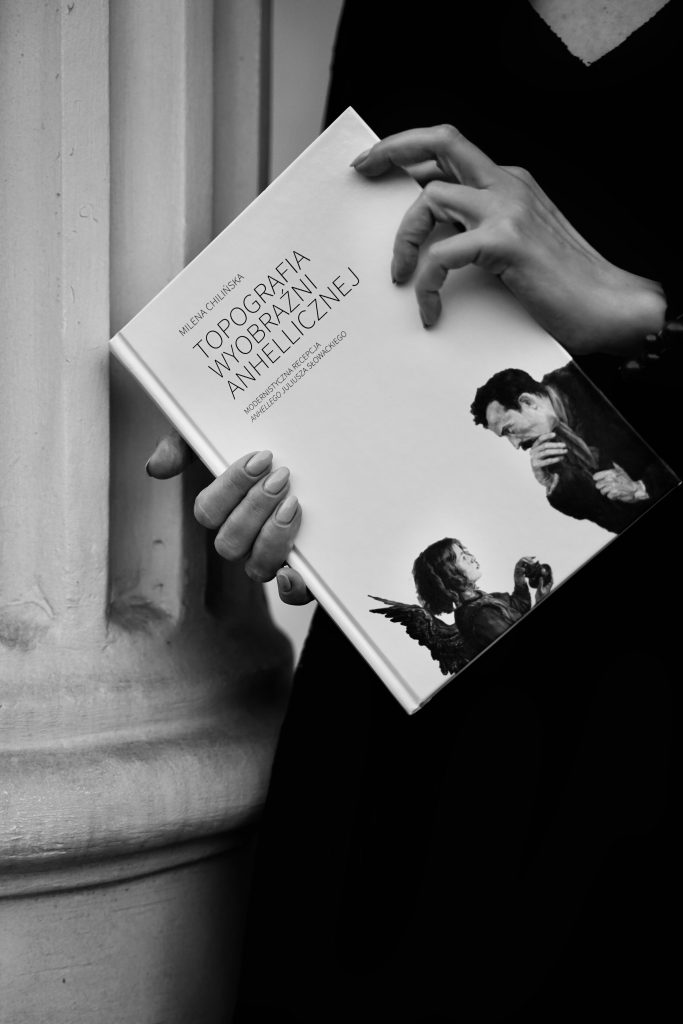
I have placed a bet on a like idea with my most recent project namely, preparation of a critical edition of Car [The Tsar], an 1893 Anhelli-inspired prose poem by the painter and author Witold Pruszkowski. Students are dealing with the editorial work, including transcribing the piece. They took part in a workshop on the manuscript, searching for letters in Pruszkowski’s hand, ordering documents from cultural institutions, analysing illustrations and paintings. It is to them that I owe a couple of editorial decisions.
Lectures on the Słowacki journey is another important aspect of our popularising activities. In October 2020, I gave a lecture on Słowacki’s journey to Greece and Lebanon and the manuscript of his journal at Warsaw’s High School. Professor Maria Kalinowska delivered popularising lectures at other grammar schools as well as during a youth scholar camp, giving the young participants an opportunity to ask questions concerning Romanticism and Słowacki’s voyage.
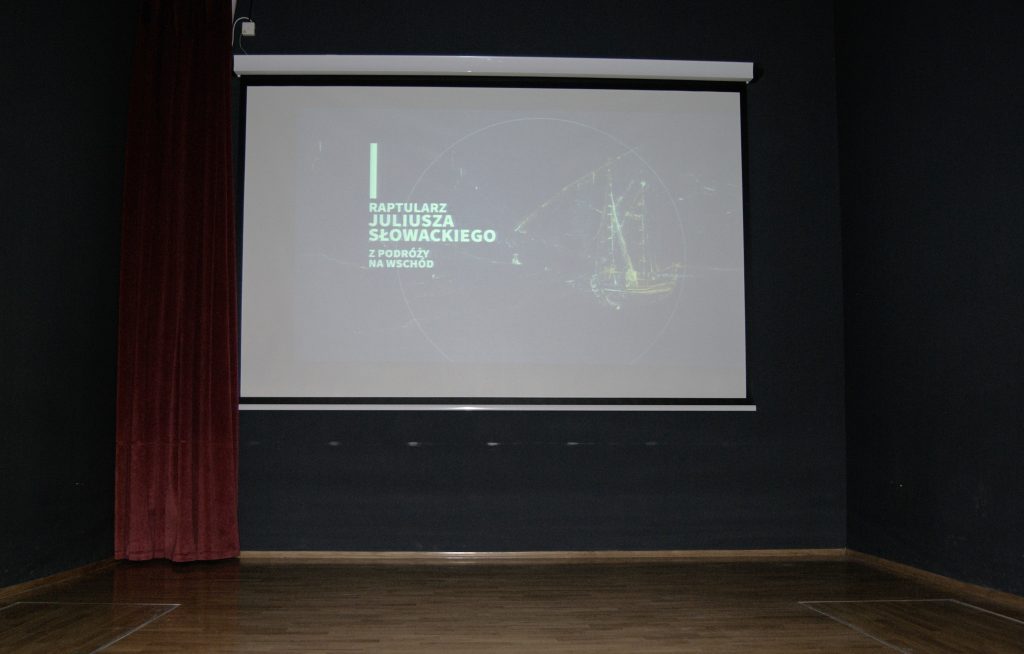
Via Instagram, I become friends with people fascinated with Romanticism but affiliated to no scholarly institution. Together, we have held a popularising event called ‘Romantykon I – Convention of Romanticism Lovers’, which was quite a success. All-day-long lecturing with contributions from a hundred participants included my speech on paintings inspired by Słowacki’s journey-related texts. Contestants in the accompanying cosplay competition dressed up as characters from Romanticist authors’ works; the winners were female reenactors who had made nineteenth-century-style costumes, and a man in the guise of Adam Mickiewicz. The next edition is scheduled on 29 October 2022; we have obtained funding from the Polish Ministry of Culture, and a hundred tickets to the event have been bought already. During the Convention, you can visit stalls of exhibitors – publishers and artists – offering items related to Romanticism. The young people who applied for displaying their items at a stall are working on their comics, bags, notepads, T-shirts, postcards and other gadgets inspired by Romanticism. The event will be broadcast online as well. Sharing our interests with young people and to integrate with those who find works of Romanticist authors and artists close to them is a real pleasure for us.
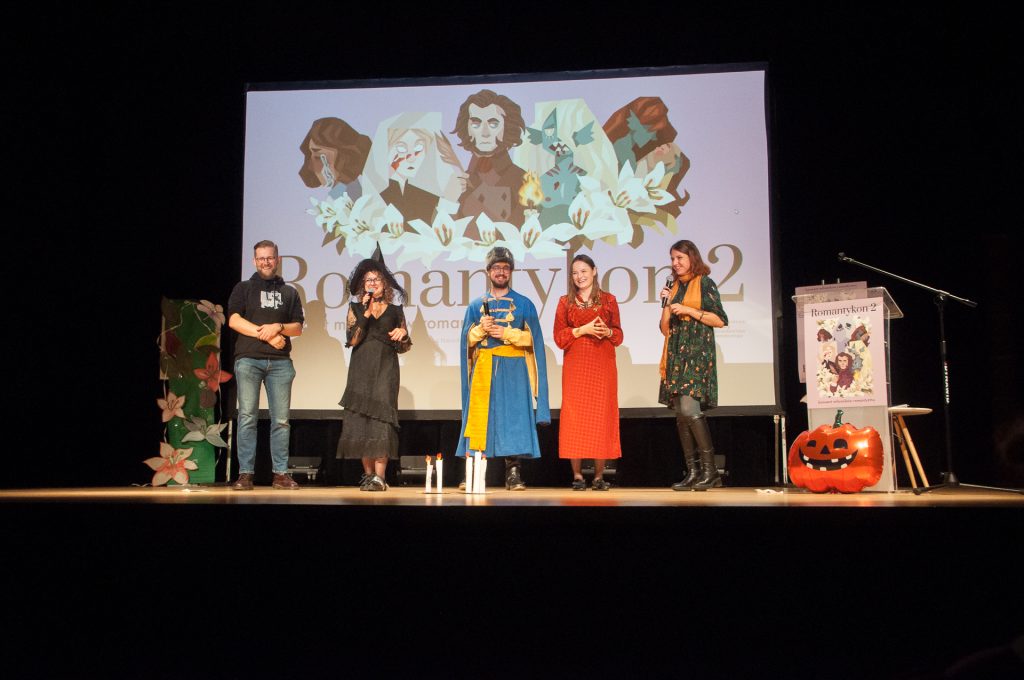
Romantykon 2022 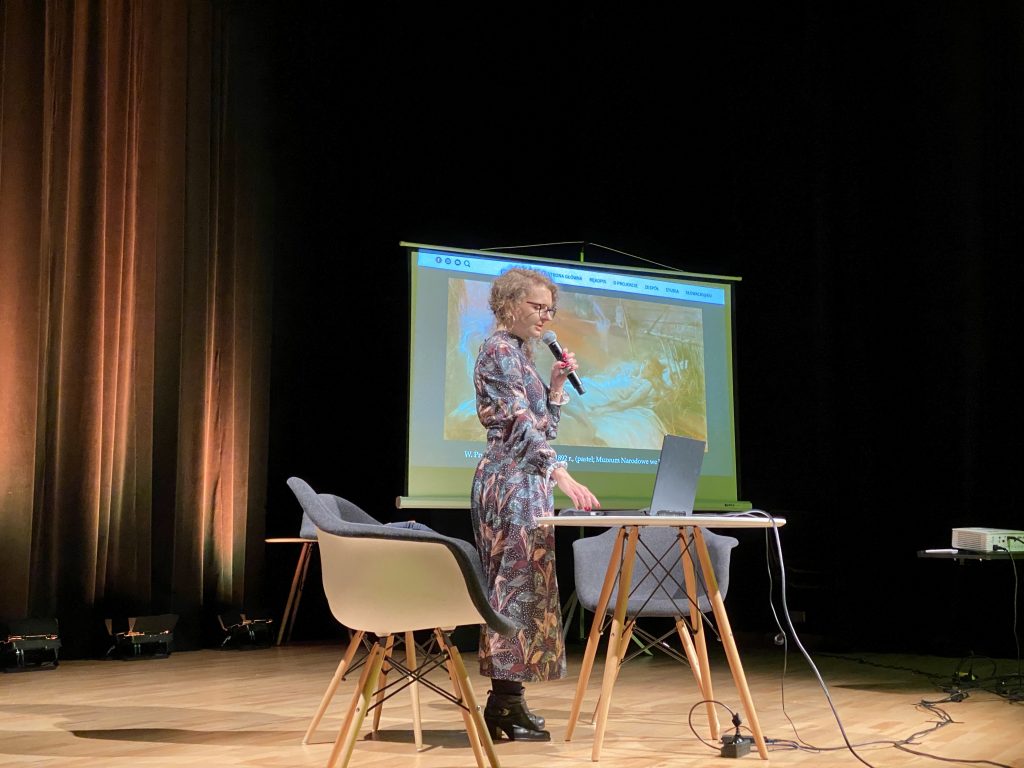
Romantykon 2021
At the exhibition called Słowacki in Lebanon, recently held at the Museum of Literature in Warsaw, a few journey-related lectures were given by Maria Kalinowska, Henryk Głębocki, and others, whereas I took part in the closing interview. We talked, to a large audience, about Słowacki’s Anhelli, the poem he wrote in the last days of his voyage. Those listening included my former students who had graduated from the school but remain inspired by the voyage and are now ready to contribute to the work on the aforesaid Pruszkowski manuscript.
Anhelli, which has been the focus of a number of my popularising activities, reveals Słowacki’s peculiar spiritual experience as his trip was nearing its finish, and the feelings stemming from captivity and exile intensified. Leaving the Betcheshban monastery, the poet remarked in a letter to his mother that there is nobody waiting for him in Europe as he is about to leave for it.
Anhelli, dying, asks the birds, “Where are you flying to, my sea-gulls?”, and they respond, “We’re flying to the homeland of yours! / Should you tell us to bid your greetings to somebody? Or, ought we to pause over some pleasing house and squeal a song of misfortune?”
The experience of captivity, banishment, and yearning for the motherland left a profound influence on the poet’s existence. Anhelli’s vision Siberian wilderness and wasteland can be perceived as an epitome of inner conflict, lostness, and emptiness associated with an unanchored status and inability to return home.
As a teacher and scholar, I am pleased to embark on diverse popularising actions, finding them one of my favourite areas of work. Apart from disseminating Słowacki’s works and the efforts of our Team, it apparently enables the young people to discover their own meanings of Romanticism –those related to Słowacki’s spiritual experiences, for instance. What I find important in such activities is not only mentoring and tutoring but also supporting the young participants, having private conversations with them, and doing intense work (often well into the night). The activities we have undertaken together – whether now or during the pandemic – always gave me and my students a sense of purpose and agency. I am grateful to those young people for their patience with Romanticism in general and with Anhelli in particular. As a token of their gratitude, I was presented a notepad with a dedication and words of thanks: “for making us realise that Romanticism is everywhere”.
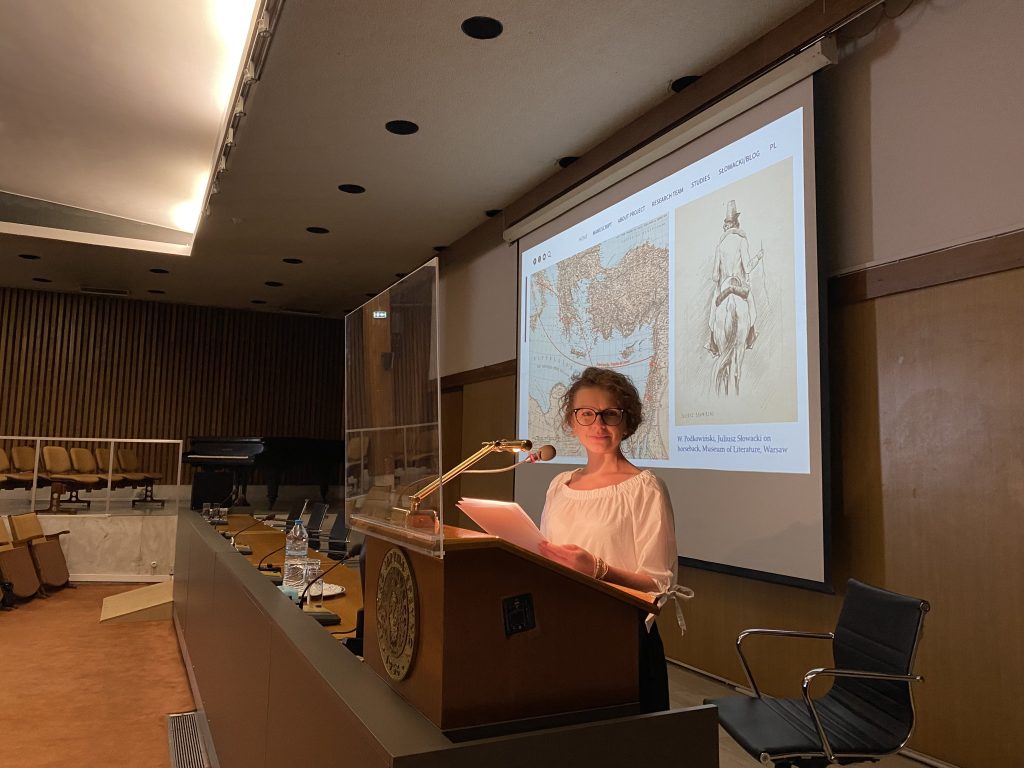



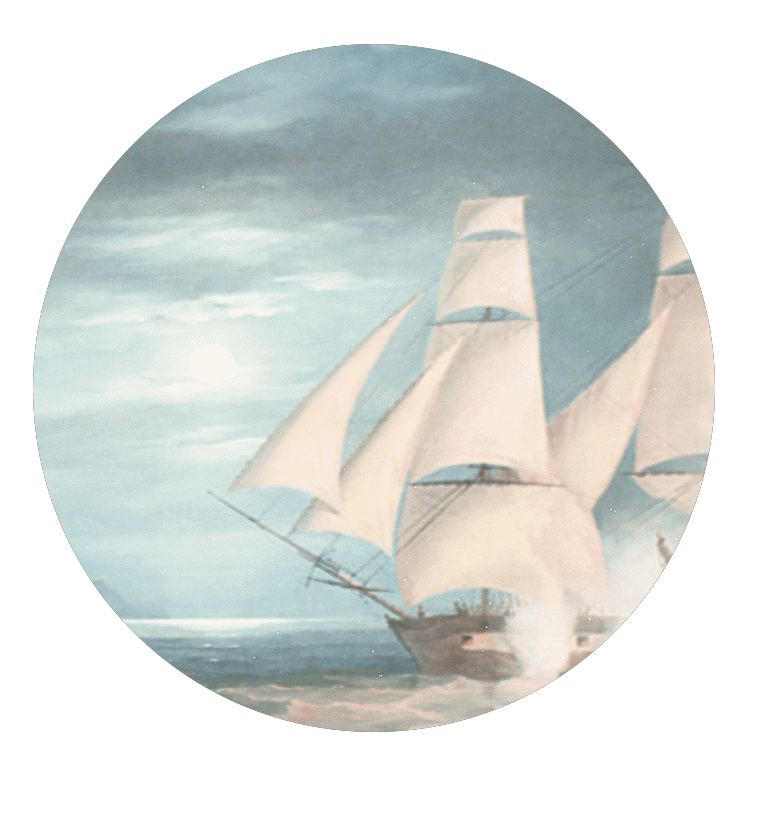
Illustrations: 1. Banner: January Suchodolski, Turkish Ship Burned by the Greeks, 1839 (oil on canvas, 136 x 185 cm), Museum of the Polish Army in Warsaw; 2. Cyprian Kamil Norwid, The Dream, sketch from Album of Marcelina Czartoryska, photo: The Historical Museum of the City of Cracow, inv. no. MHK-813-K; 3. Vignette: The Poet, in: J. Słowacki, Kordian, Paryż, 1834, p. 1; 4. Initial „T”, in: J. Słowacki, Ojciec zadżumionych, Kraków 1909 p. 37.



